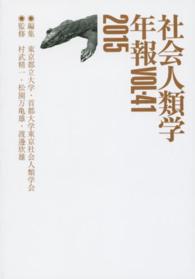Full Description
The Greek Language after Antiquity offers an in-depth look at the diachrony of the Greek language, focusing on a period relatively neglected by modern scholarship: the more than 1,000 years between the end of Antiquity and the early modern period. These studies, written by experts in the field, target different levels of analysis (phonology, morphology, semantics, lexicon, dialectology, sociolinguistics), combining substantial primary data with various theoretical approaches.
It begins with a radical proposal for a different approach to the historical linguistics of Greek, focused on the process of language diversification, as opposed to the traditional genetic approach to dialect emergence. Other topics include register variation in Byzantine literature, crucial for understanding the subsequent evolution of a written standard; morphological variation in conjunction with problems of textual transmission in medieval and early modern vernacular texts, with special focus on the notion of "philology"; evidence for language contact in the Late Medieval period; and the use of graphemic evidence, i.e. spelling, to detect changes in pronunciation over a long time span. Two chapters examine issues of word formation: one presents a new research project on diachronic derivational morphology; the other examines compound formation in the Cretan dialect. The final chapter examines theoretical and methodological issues in studying the historical semantics of Greek.
This book is essential reading for researchers in Greek historical linguistics and especially useful for students, teachers and researchers in Classics, Byzantine studies and general linguistics, with important connections to the historical linguistics and text-critical studies of other languages, particularly Romance and Turkish.
Contents
Introduction
David Holton and Io Manolessou
1. The regional diversification of Greek AD
Io Manolessou
2. Investigating the diachronic phonology of Medieval and Modern Greek through graphemic evidence
Nikolaos Pantelidis
3. Language contact in Late Medieval Greek: an under-estimated phenomenon?
Theodore Markopoulos
4. Philology and φιλολογία: linguistic variation in Medieval and Early Modern Greek from the viewpoint of textual scholarship
Tina Lendari
5. Many linguistic ways to tell the same story: the four versions of the Life of Maximos the Hutburner
Martin Hinterberger
6. Medieval and Early Modern Greek derivational morphology: the missing chapters
Tina Lendari and Io Manolessou
7. Compounding in Cretan across centuries
Angela Ralli and George Chairetakis
8. Issues in the historical semantic analysis of Modern Greek
Christina Bassea-Bezantakou







